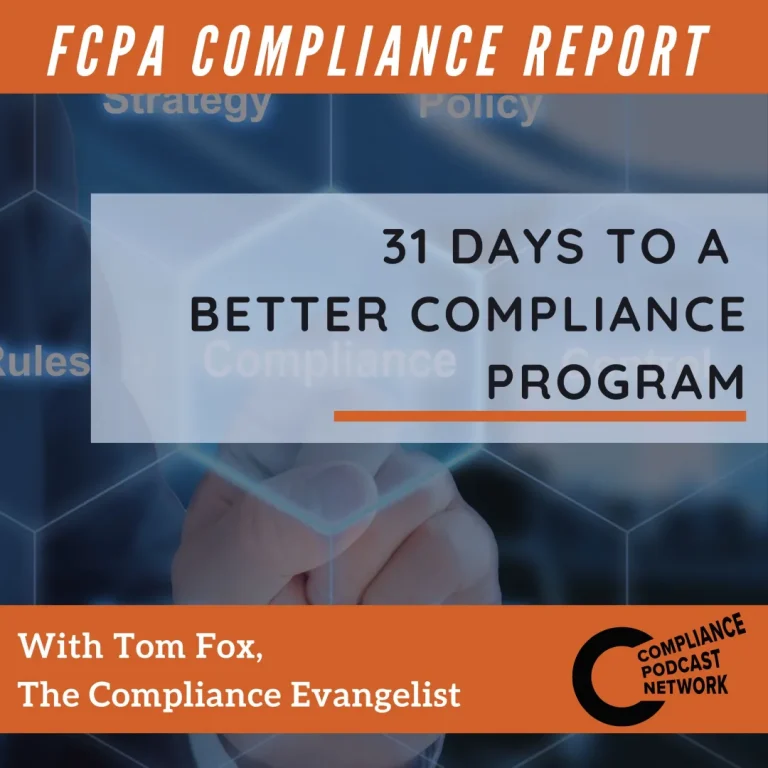Best practices compliance program. The first in Hallmark No. 1 states, “Within a business organization, compliance begins with the board of directors and senior executives setting the proper tone for the rest of the company.” The second is found under Hallmark No. 3, entitled “Oversight, Autonomy and Resources,” which says the Chief Compliance Officer (CCO) should have “direct access to an organization’s governing authority, such as the board of directors and committees of the board of directors (e.g., the audit committee).” Further, under the US Sentencing Guidelines, the Board must exercise reasonable oversight of the effectiveness of a company’s compliance program. The DOJ Prosecution Standards posed the following queries: (1) Do the Directors exercise independent review of a company’s compliance program? and (2) Are Directors provided sufficient information to enable independent judgment?
Further, if a company’s business plan includes a high-risk proposition, there should be additional oversight. In other words, there is an affirmative duty to ask tough questions. But it is more than simply having a compliance program in place. The Board must exercise appropriate oversight of the compliance program and the compliance function. The Board must ask hard questions and be fully informed of the company’s overall compliance strategy. Lawyers often speak to and advise Boards on their legal obligations and duties. If a Board’s oversight is part of effective financial controls under Sarbanes Oxley (SOX), that includes effective compliance controls. Failure to do either may result in something far worse than bad governance. It may directly lead to an FCPA violation and could even form the basis of an independent FCPA violation. A company must have a corporate compliance program in place and actively oversee that function. A failure to perform these functions may lead to independent liability of a Board for its failure to perform its allotted tasks in an effective compliance program. Internal controls work together with compliance policies and procedures and are interrelated control mechanisms. There are five general compliance internal controls for a Board or Board subcommittee role for compliance:
Three Key Takeaways:
- GTE compliance internal controls are low-hanging fruit. Pick them.
- Compliance with internal controls can be both detected and prevented controls.
- Good compliance with internal controls is good for business.






